Lies, damn lies and economic modelling
 Barry Lane •
Barry Lane •  Wednesday, July 7, 2010
Wednesday, July 7, 2010 KPMG leads where most lawyers fear to tread … Working both sides of the street … Conflicts in the eye of the beholder … Redrawing the fine line on “independent” advice … Barry Lane reports
 I was intrigued to read Ross Gittins’ piece in The Age spilling the beans on KPMG’s “independent modelling” for both sides in the resource rent tax “debate”.
I was intrigued to read Ross Gittins’ piece in The Age spilling the beans on KPMG’s “independent modelling” for both sides in the resource rent tax “debate”.
Talk about clipping the ticket at both ends.
Gittins reported that KPMG had taken briefs simultaneously from the government and the miners to model the effects on the mining industry and the national economy of Kevvie’s now deceased tax.
Naturally, each modeling exercise came up with different, and diametrically opposed, projections for each client.
For some time, I’ve thought that economists have tried to pass themselves off as scientists to elevate their status, and hence their incomes, above that of “social scientists” and other hucksters of their ilk, like lawyers.
Scientists are usually interested to find out what actually happens rather than what might happen, but in either case independently of whoever is greasing their palms at the time.
In courts throughout the country, lawyers come up with “independent experts” paid to give evidence that favours their client.
We know they’re independent because court rules require experts for hire to declare that they have read the “expert witness code of conduct” (for example see Form 44A of the County Court Rules) and are indeed independent of the party who pays them.
I imagine that medicos form the largest pool of “independent experts” giving evidence in our courts, simply because personal injury cases comprise the bulk of the action in civil courts.
Medicos in such circumstances are either pro-plaintiff or pro-defendant.
They don’t usually change sides because that might raise suspicion and concern about whose side they’re really on.
One wouldn’t want a medico telling you that your client, the plaintiff, is a genuine person suffering from debilitating idiopathic pain while telling your opponent that the same fellow is a malingering fraud.
It may be that each side of the resource rent tax “debate” didn’t know that KPMG had taken a wedge from the other side when they briefed.
Or perhaps they knew and didn’t care because each side saw the whole exercise as a joke to snow the punters and provide endless distractional opportunities about which the media could chatter and speculate.
As Gittins says, economists don’t know how the economy works – they just think they do.
So they stoke-up their formulae and models with assumptions which, just coincidentally, will produce the result favoured by their paying client.
If economic consultants like KPMG are prepared to take a sling from both sides of an adversarial “debate” they might wish to consider the risks of trashing their claim to scientific expertise, quite apart from the risks that might be posed to confidentiality and loyalty.
KPMG in its various guises should know all about such vexation because in Mallesons Stephen Jaques v KPMG Peat Marwick (1990) 4 WAR 357 – not online) and in the UK case of Bolkiah v KPMG the firm was exposed to the relevant arguments that have been compendiously collected in a Melbourne University Law Review article dealing with conflicts of duty by Victorian barrister Sandro Goubran.
There are things that rats, unlike lawyers, won’t do – but even most lawyers understand that they shouldn’t act for both sides in the same or a similar dispute.
Surprisingly, one who didn’t know where the line should be drawn is the former president of the Law Institute of Victoria (1995-6), Einstein Factor brains trust member and chairman of the Law Council of Australia’s access to justice committee, Mark Geoffrey Woods.
Woods got a birching from the Bureau de Spank in Legal Ombudsman v Woods.
His firm, Tyler Tipping & Woods, acted for two clients at the same time whose interests were in conflict.
Former Supreme Court judge R.K. (Dick) Fullagar summed up the case against Woodsy (142-word sentence and all):
“The misconduct is in substance said to lie in acting for one Robert Kerr in connection with criminal charges against him which included rape upon, and false imprisonment of and serious assault upon, one Leonie D, when the practitioner knew or ought to have known that his firm was also acting as a legal practitioner for the prosecutrix or complainant D, and knew or ought to have known that a conflict of interest existed by reason of the firm’s client D being the prosecutrix and a witness in the criminal proceedings brought against Kerr, and knew or ought to have known that his firm in the course of acting for D had been entrusted by her with a mass of highly confidential and sensitive material which would be relevant to (inter alia) her credit as a witness in the trial of Kerr.
In the first place it is said that there was a conflict of interest because there was a real and not illusory risk that the confidential material would become known to and used by Kerr himself or by those in the firm working for Kerr.
In the second place it is said that there was a conflict of interest because of the obvious conflict between on the one hand the duties owed to the client who was the complainant and victim of the alleged crimes and on the other hand the duties owed to the alleged rapist.
In the third place it is said that there was an obvious conflict of interest on what is now known as the ‘loyalty principle’, that is to say an obvious conflict between the respective duties of loyalty owed to the two persons respectively.
Although the practitioner ultimately did not act for Kerr upon his trial, nevertheless the tribunal finds that the practitioner acted, in relation to the charges to which we have referred, in such matters as bail and committal proceedings, and in the collection recording and assessment of a considerable volume of evidence for use at Kerr’s trial, much of it for use in attacking the credit of D, and the forwarding of it to Victoria Legal Aid with advice upon defences open to Kerr at his trial.”
Whether courts might regard KPMG’s conduct doing econometric projections for adversaries in a similar way to lawyers acting for clients is a subject upon which minds would differ.
However, I foresee aggravation for KPMG, particularly if either of its clients in the RRT “debate” should be inclined to let the confidential information provided in the brief pop-up somewhere else.
 Conflicts of interest
Conflicts of interest 


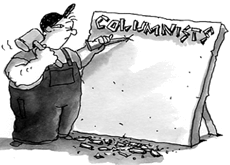

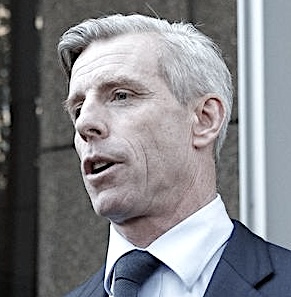

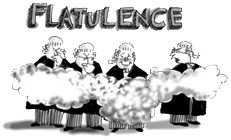
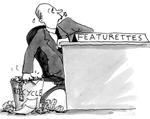
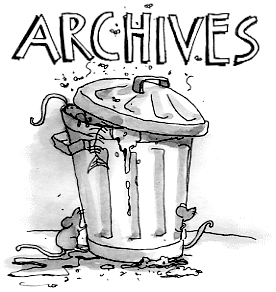
Reader Comments